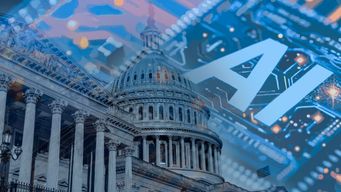Being able to advertise your product as “Made in the USA” can be a key advantage to marketers and is an attribute that is important to many consumers. Aware of this, the FTC has been on the watch for deceptive Made in the USA claims. Last week, the FTC held a workshop on “Made in the USA” claims to consider consumer perception of these claims and the need for any changes to the existing guidance provided by the FTC.
Current FTC guidance on these claims stems from a 1997 FTC Enforcement Policy Statement in which the FTC concluded consumers are likely to understand an unqualified U.S. origin claim to mean that the advertised product is made in the USA with “all or virtually all” of the components made in the United States.
The workshop began with a discussion on current consumer perceptions of what a “Made in the USA” label means, and why consumers buy “Made in the USA” labeled products. Panelists discussed research showing that consumers purchased “Made in the USA” labeled products: (1) to help keep jobs in America; (2) to support the U.S. economy; (3) because of a perception that products made in the USA are more reliable than products manufactured abroad; (4) because of a perception that working conditions for manufactures in the U.S. are better than those abroad; and (5) because consumers believe it is patriotic to buy American. The panel also discussed survey evidence indicating that American consumers are increasingly concerned with transparency, responsible sourcing, and an ethical supply chain when they are considering what products to buy; with these factors being particularly important to millennial consumers.
Panelists then discussed the difficulties with doing business under the current policy. A recurring theme was the ambiguity surrounding the “all or virtually all” standard for unqualified “Made in the USA” claims and the difficulties many manufactures face in trying to meet this standard. The FTC requires significant parts and processes that are not made in the USA to be “negligible,” but provides no numerical standards for “all or virtually all”. Also confusing matters is the California law that prohibits Made in USA claims “when the merchandise or any article, unit, or part thereof, has been entirely or substantially made, manufactured, or produced outside of the United States.” The California law makes allowances for products based on the percentage of non-U.S. made parts or services in the wholesale value of the end product. The panelists remarked how these ambiguities have forced some manufactures to either make a qualified claim or, because of the extensive cost and time involved in figuring out if their claim is compliant with the FTC standards, decline to make the claim altogether.
To conclude the workshop, FTC staff explored potential remedies or changes to the FTC’s existing guidance with the panelists. Some panelists argued for tougher penalties for violators (including monetary damages and a mandatory notice of violation) as a more effective deterrent to bad actors, along with better follow up by the FTC on previous violators who had received closing letters. The FTC staff remarked that it would be difficult for them to expand their enforcement efforts via litigation because of staff and budgetary restraints. Nearly all of the members of the panel agreed that the policy statement and the “all or virtually all” standard should be codified in a rule that would help clear up some of the ambiguities currently surrounding the “Made in the USA” claim process. The FTC encouraged panelists and the public to comment on potential changes to the policy via their website. What, if anything, the FTC does next remains to be seen.





